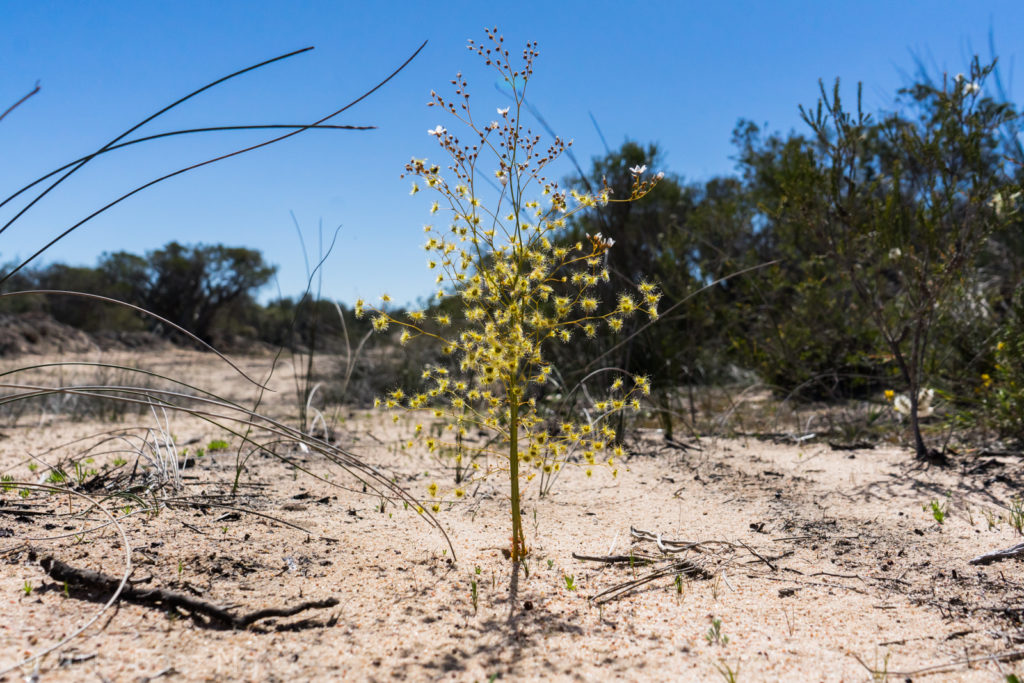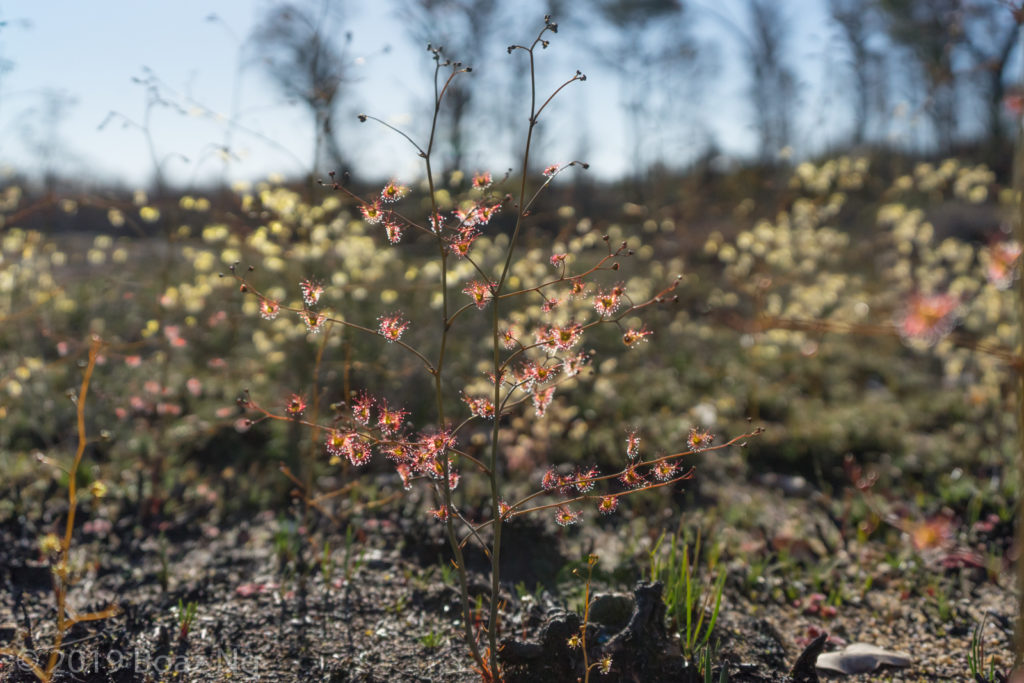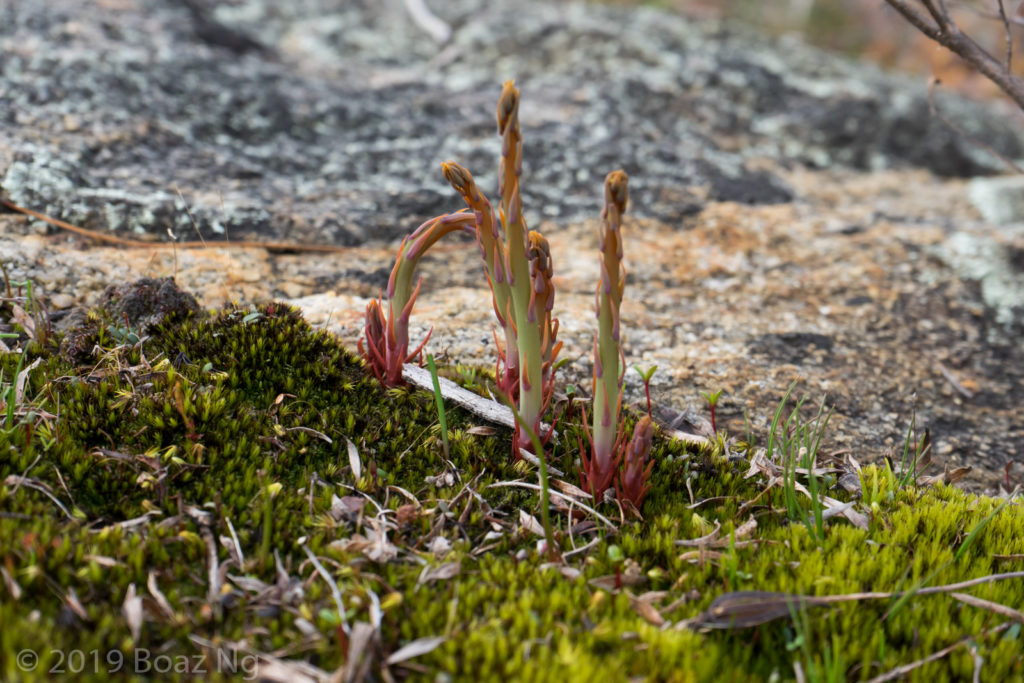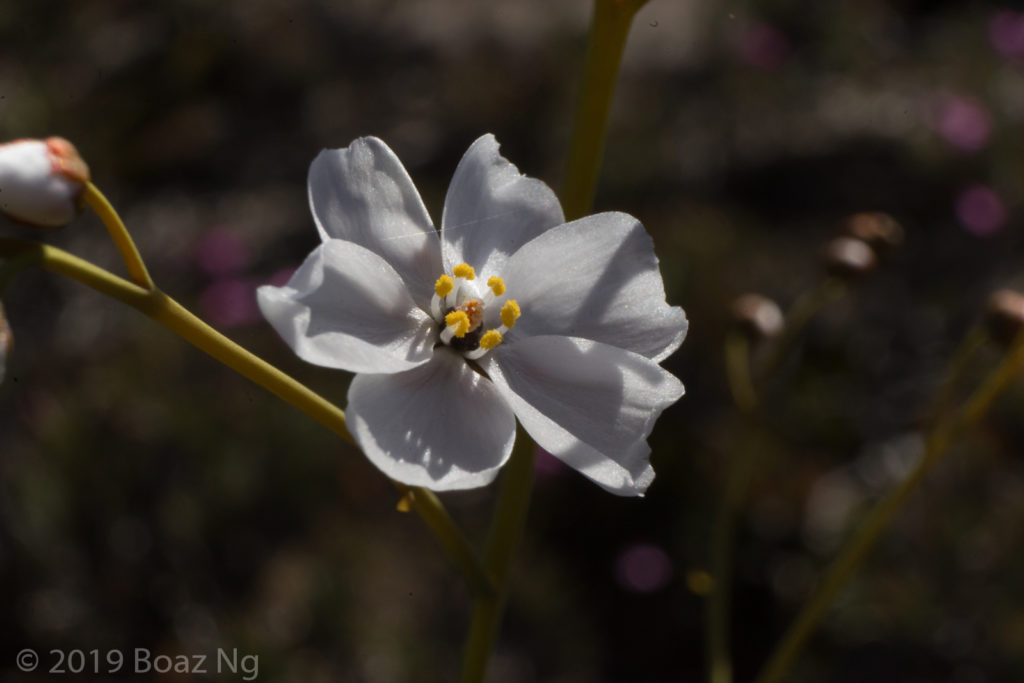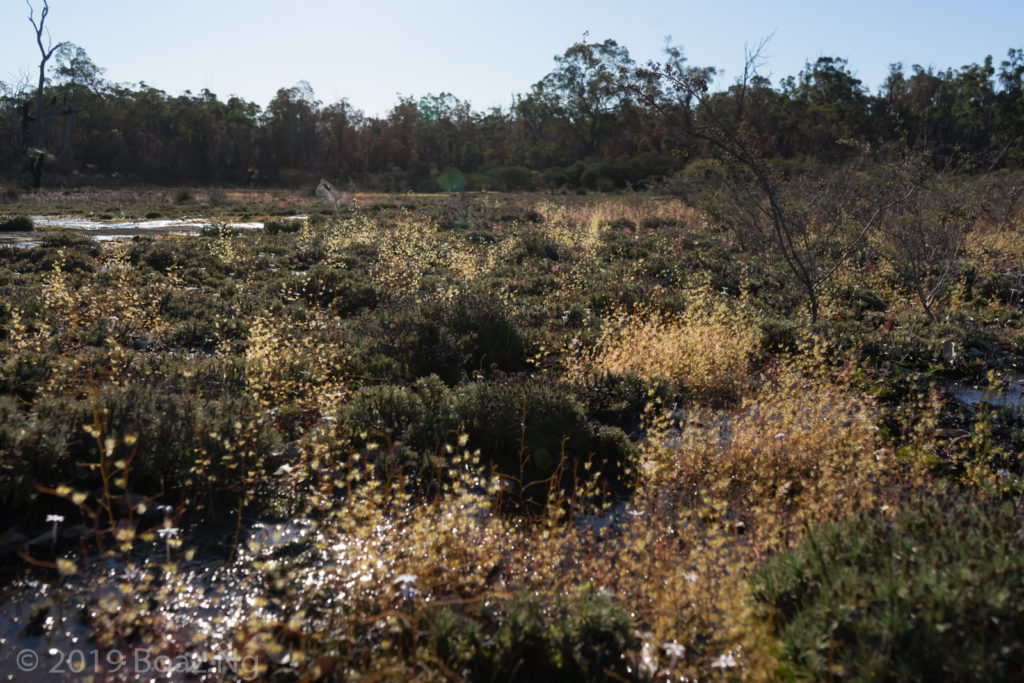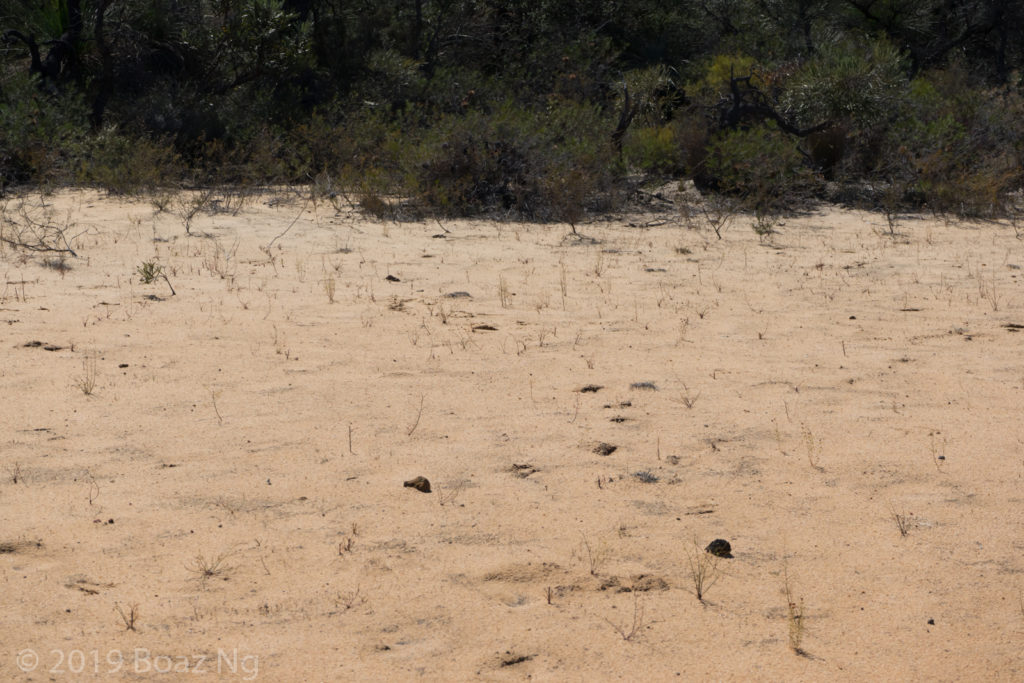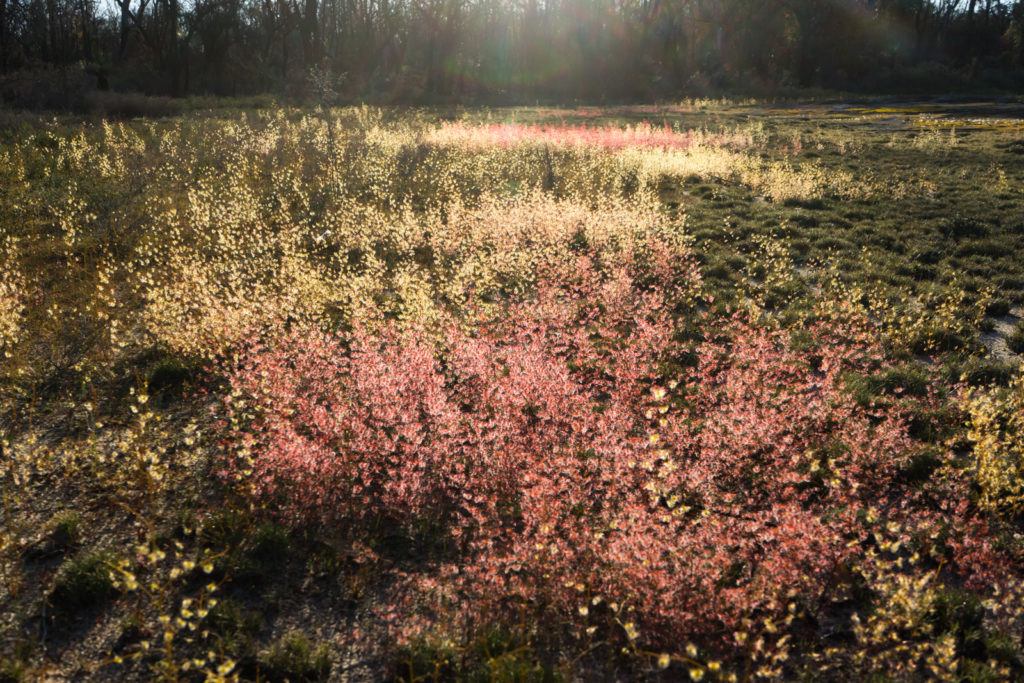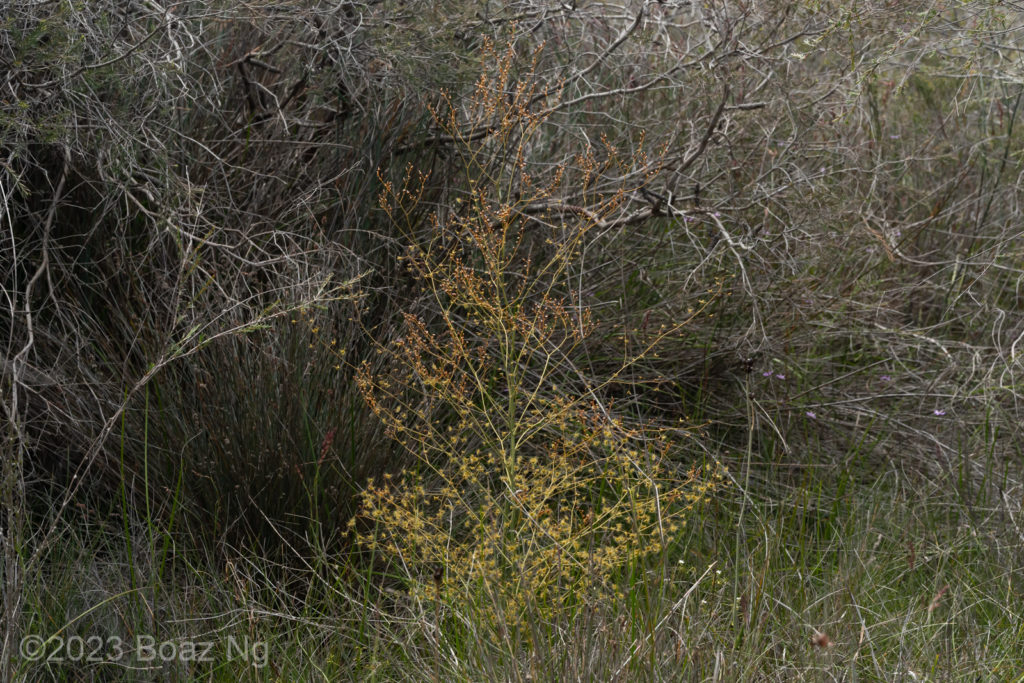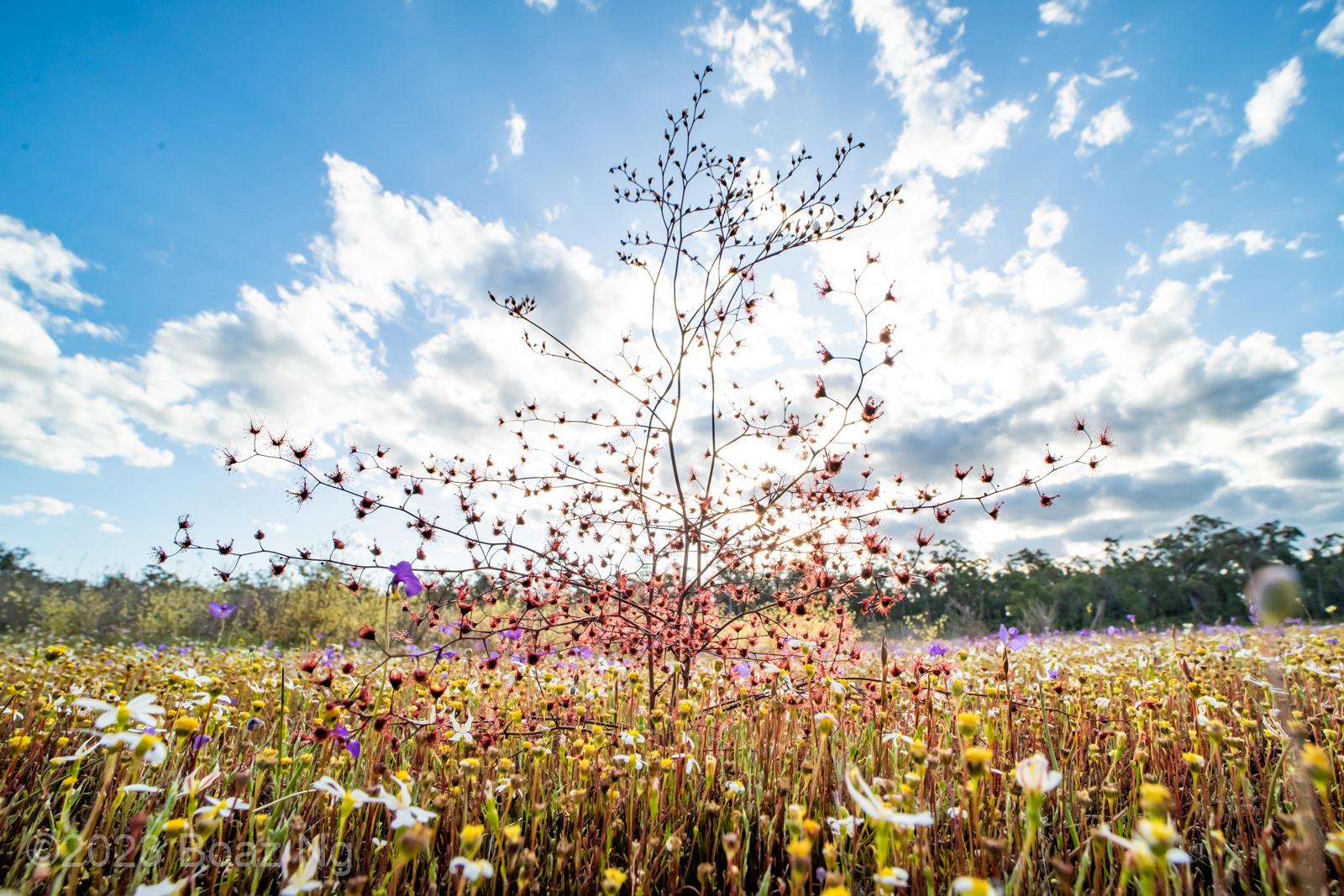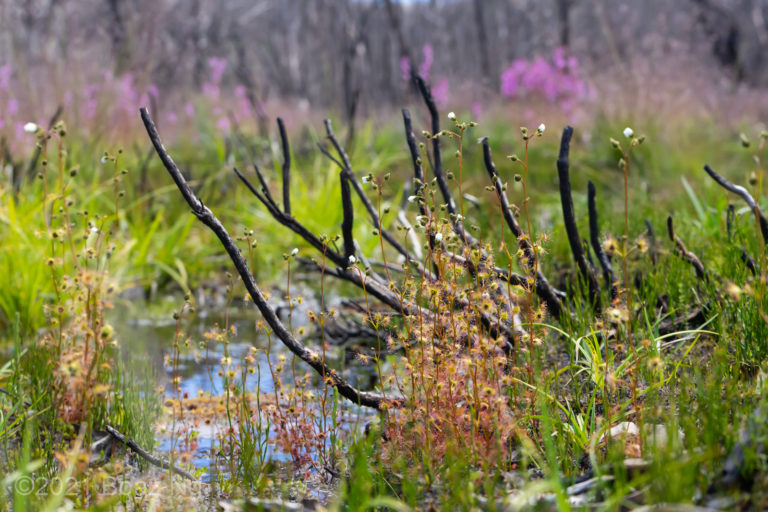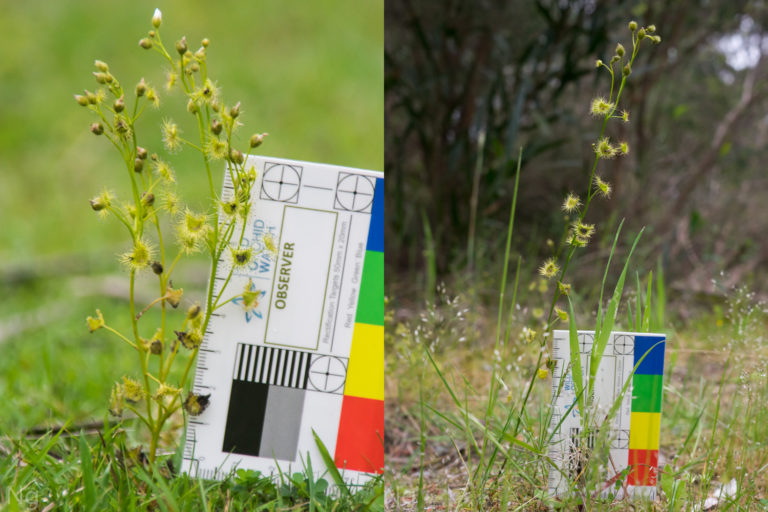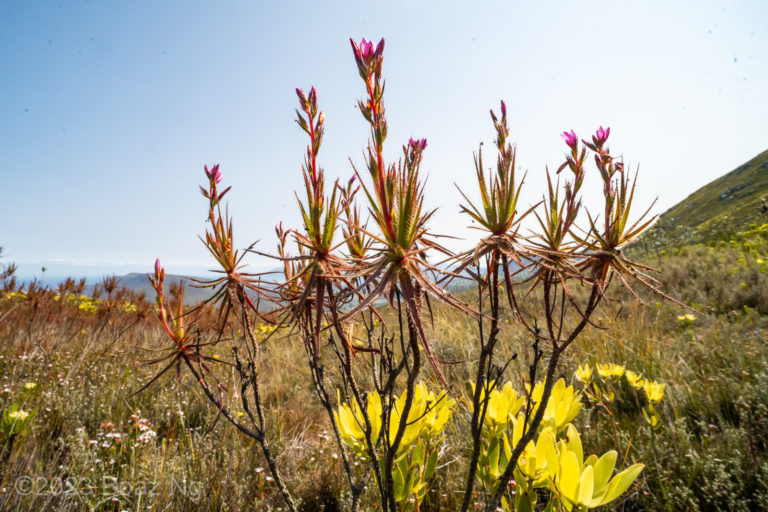Drosera gigantea is a tuberous sundew that is named for its gigantic size.
The species emerges towards the end of winter as aspagarus-like shoots covered in non-carnivorous bracts. This shoot grows into a thick central stem with regular side branches to give a tree-like morphology. The leaves are crescentic in shape. The central stem terminates in a branching inflorescence of flowers. There are two main forms of the species – a larger green form and a slender red form.
D. gigantea is associated with winter-wet niches across south west Western Australia. It is common in the drainage fields of large granite outcrops and along swampy creek lines. It is distributed from inland areas of the Great Southern Region, along the Swan Coastal Plain and adjacent ranges and up the coast to around Jurien Bay.
The only species that shares a similar tree-like morphology is Drosera geniculata. Drosera gigantea can be distinguished by its mostly straight or slightly kinked petioles and branches, as opposed to the strongly zig-zagging branches and petioles of Drosera geniculata, which often jut back to point towards the centre of the plant.
